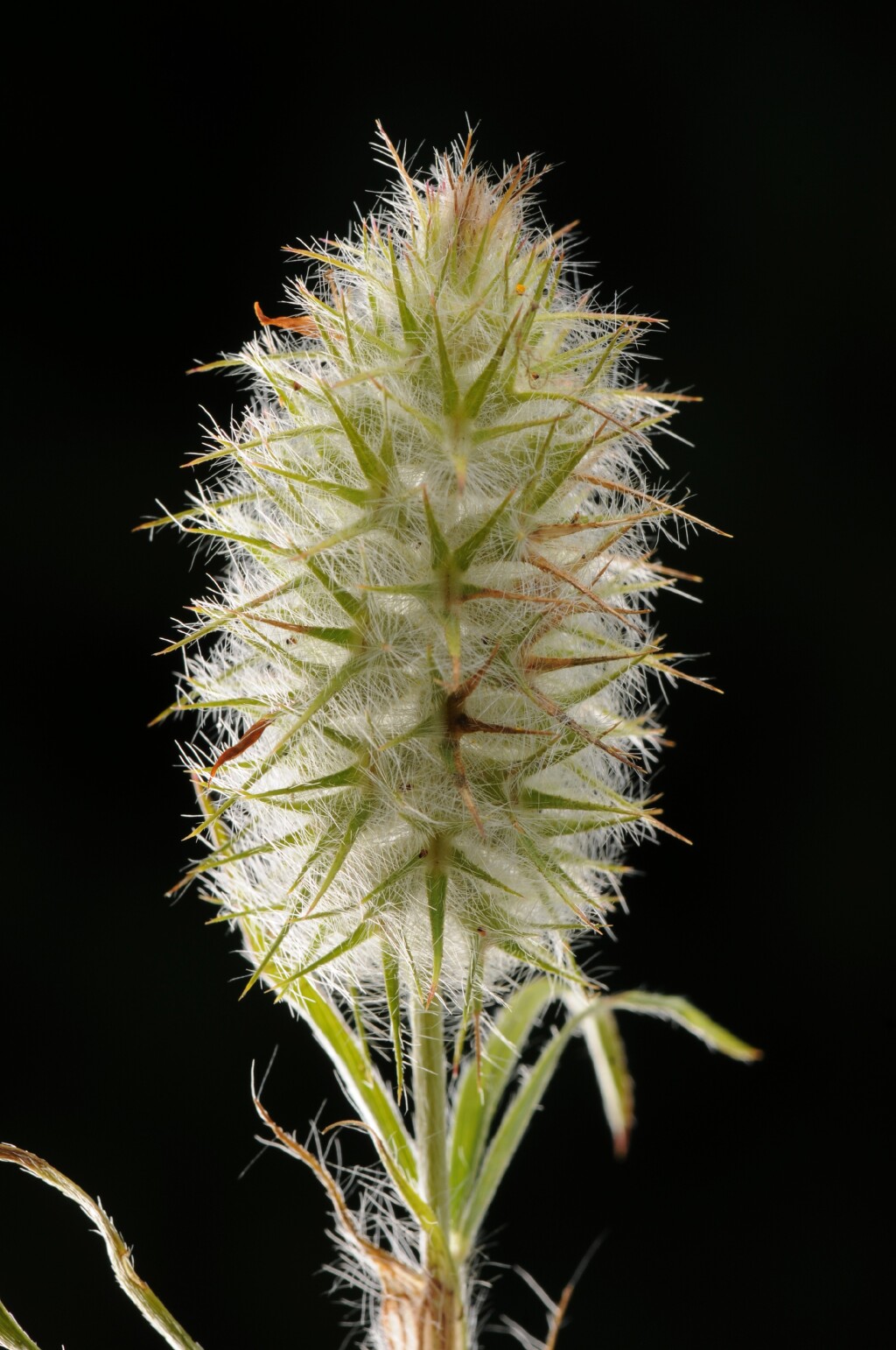Trifolium
Annual, biennial or perennial herbs, rarely woody (not in Victoria). Leaves mostly alternate, palmately or sometimes pinnately trifoliolate, rarely to 9-foliolate; usually petiolate; stipules conspicuous, often sheathing, partly united and adnate to petiole. Inflorescence axillary or falsely terminal, head-like, spicate or umbellate, usually many-flowered; bracts small or absent. Calyx cylindric or campanulate, sometimes inflated with age, throat open or closed by a 2-lipped callosity or a ring of hairs, teeth equal or unequal; petals narrow, usually united to staminal tube by their claws, often persistent in pod; stamens diadelphous, 9 united by their filaments in the lower half, the tenth free and facing the standard, all or half the filaments dilated at the apex, anthers uniform; ovary sessile or stipitate, ovules 1–12, style filiform, straight or bent, glabrous, stigma capitate. Pod small, ovoid to linear, often membranous, usually indehiscent; seeds globose or reniform, usually 1 or 2, rarely to 10, lacking a conspicuous aril.
About 300 species, almost cosmopolitan (but not native in Australia); c. 38 species naturalised in Australia.
Many species of clover are cultivated as pasture plants, most of them becoming naturalised at least nearby, often on disturbed sites such as roadsides and paddocks.
Jeanes, J.A. (1996). Fabaceae. In: Walsh, N.G.; Entwisle, T.J., Flora of Victoria Vol. 3, Dicotyledons Winteraceae to Myrtaceae, pp. 663–829. Inkata Press, Melbourne.
 Spinning
Spinning


